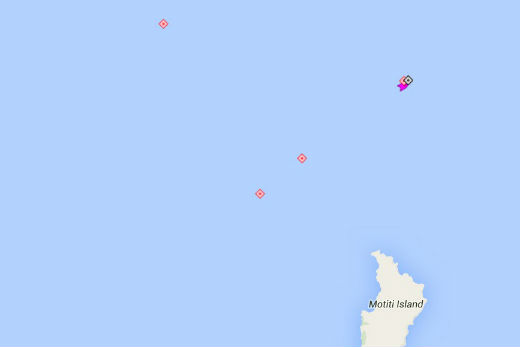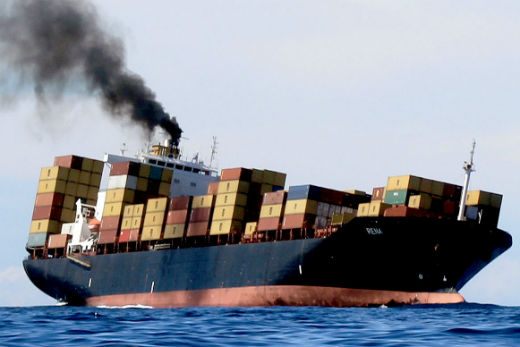Shipping lanes will not be introduced around the New Zealand coast after a review of coastal navigation safety following the Rena disaster in the Bay of Plenty.
Photo: file.
The review is because of a Transport Accident Investigation Commission (TAIC) recommendation that Maritime NZ collect data on shipping movements around the New Zealand coast, and monitor and control the use of virtual aids to navigation around the New Zealand coast.
'Incidents like the Rena grounding would not necessarily be prevented if shipping lanes were in place – in the case of the Rena, poor watch-keeping and navigation were identified as key contributing factors,” says Maritime New Zealand director Keith Manch.
'Previous studies indicated that ship volumes and other existing hazards around New Zealand do not meet international criteria for imposing shipping lanes or mandatory routes and the review indicates that this is still the case,” says Keith.
The review begun in April 2015 was prompted by an anticipated increase in the number of ship visits to New Zealand, a trend toward larger ships, and technology changes in navigational aids.
Recent access to ship tracking data based on ships' Automatic Identification System (AIS) enabled Maritime NZ to examine the routes taken by ships, says Keith.
Work will now be done to improve management of aids to navigation, including virtual aids, which use electronic systems – rather than physical marks or beacons – to alert ships to navigation hazards through their AIS systems.
(The Rena owners Dain Shipping and insurers The Swedish Club paid for the virtual AIS beacons now marking the Astrolabe Reef and other nearby navigation hazards on the Port of Tauranga approaches.)
'This is a fast-moving area of technology and it's proving challenging to manage internationally,” says Keith. 'We will look to develop a strategy to plan how to lead management of virtual aids to navigation around New Zealand.”
The review identified two areas of potentially higher risk relative to other locations – the Hauraki Gulf and Colville Channel, and Cook Strait – when passenger vessels and other hazards were considered in combination.
'This review does not indicate an immediate risk to vessels or water users in these areas, but we will be working with harbourmasters, pilots, ferry operators, and the coastal shipping industry to look at how risks are managed in these areas, and whether there are any gaps,” says Keith.
The NZ Coastal Navigation Safety Review report can be read here.
 Virtual AIS beacons in the Bay of Plenty. Picture: Marine Traffic.
Virtual AIS beacons in the Bay of Plenty. Picture: Marine Traffic.
'Around 120 ships' masters, harbourmasters, pilots and other water users provided expert input into the review and we're delighted with that response.”
Other review recommendations include linking with Australia to improve the approach to port State control inspections carried out on foreign-flagged vessels with more than 60 percent of ships arriving or leaving New Zealand waters also travelling to or from Australia.
'Australia uses a sophisticated data collection and risk profiling tool to manage port State control inspections and we will be discussing with the Australian Maritime Safety Authority (AMSA) what can be done to join up our two systems,” says Keith.



1 comment
Lanes not needed
Posted on 13-02-2016 11:43 | By Captain Sensible
Shipping Lanes are definitely not needed in NZ. But what is needed, worldwide, is for shipping companies to allow their bridge deck officers to concentrate on the navigation of the vessel instead of burdening them with tons of paperwork expected to be done while on watch. The law of the sea states "...a proper lookout shall be maintained at all times..." yet shipping companies don't like their officers to be paid to 'look out the window', hence unrealistic quantities of paperwork and endless forms/checklists/etc given to officer of the watch. Also letting their officers & crew get a decent uninterrupted sleep in their off time would help too. Imagine trying to sleep in port when off watch and the noise of containers being loaded reverberating through the accommodation.
Leave a Comment
You must be logged in to make a comment.